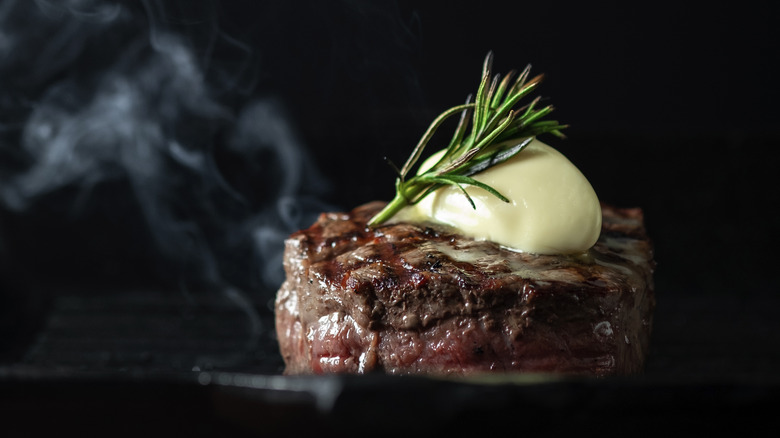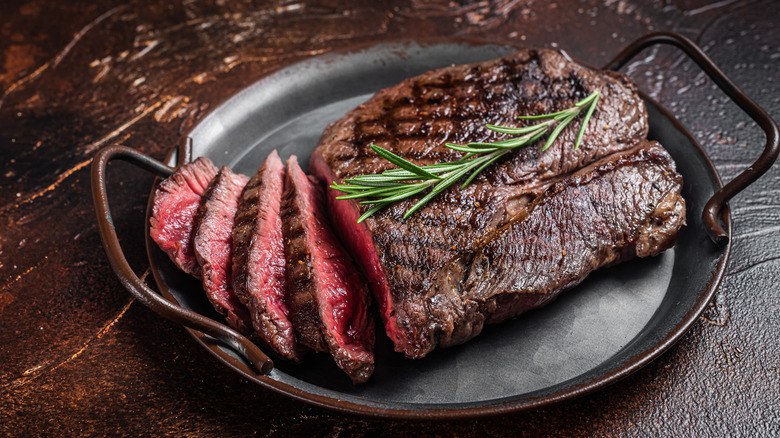The Factor That Is Most Important When Buying Steak
The image of red meat roasted over a grill, collecting a smokey, woodsy aroma as the crust crisps up, has a grip on the American public's imagination. Honestly, steak is a serious business in the United States. The Literary Hub claims beef and the social economic hierarchy in America are heavily intertwined and choosing, preparing, and eating beef was considered (and is still widely considered) a symbol of masculinity. Steak is an aspect of America's culinary culture at this point, and it doesn't seem to be letting go any time soon. Steak houses are eyed with longing and the days parents break out the grill are considered special occasions.
According to Beef2Live, the most popular cuts of steak served at restaurants today are filet mignon, strip steak, and ribeye. But there are far more than those three. While breaking down 15 different kinds of steaks, Pure Wow admits perusing your local butcher or grocery store can be a bit overwhelming if you don't know where to start.
But before you go grabbing whatever cuts of steak you come across, you need to take into account how thick the cuts are.
Size does matter
If you were to go to a restaurant and order what is supposed to be a quality steak and they serve you a skinny, flimsy cut of meat, you'd be upset. So, why would you go out and buy a thin-cut steak for yourself? You may think you're getting more bang for your buck, but in reality, Food Fire Friends says that grocery stores will often chop a thick steak in half to raise the price and make you think you're getting more meat for less cost. Don't fall for it. You should absolutely be looking for a thick-cut steak because it allows you to cook the meat as dark or as rare as you'd like while ensuring the meat stays tender and a satisfying crust will be present on the outside.
According to My Chicago Steak, the key to cooking steak is that for every half inch over an inch, add an extra five minutes of cooking (though this may vary depending on how well done you like your steak). It is recommended that you not purchase steaks that are less than one and a half inches in thickness. You can aim for above that number, but try to avoid going below it, and always make sure that the internal temperature of your steaks reaches between 120 and 130 degrees Fahrenheit for rare, between 130 and 135 degrees Fahrenheit for medium-rare, and between 135 and 145 degrees Fahrenheit for medium (via Traeger).

